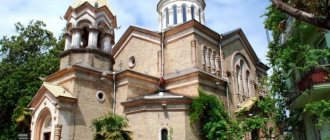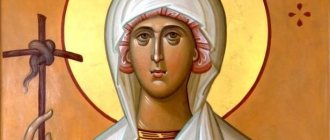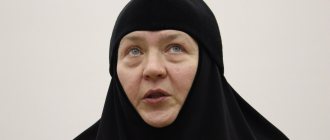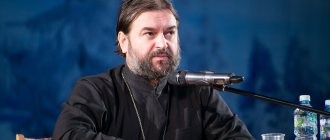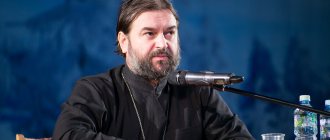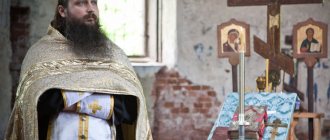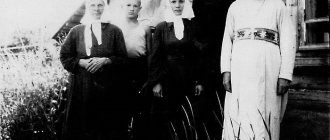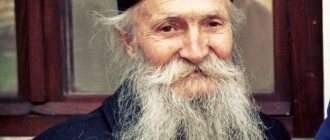Today, you can often come across lectures and conversations in various sources by Nina Krygina, a nun and candidate of psychological sciences. Its main topic is Russian Orthodox psychology. She copes with any questions of this kind easily and wisely, exploring everything with her own technology of deep psychological analysis. Nina Krygina gives the right advice and guides many on the right path. This nun is a person who, for our contemporaries, reveals the basics of family, love and human relationships and even provides professional recommendations. So who is she? Let's try to figure it out.
Nina Krygina: biography
There is very little information about the biography of Nina Krygina; sometimes only from lectures some details of her life leak out. It is approximately known that she was born in 1969.
She received her higher education in Moscow, then taught at Magnitogorsk University. After a while, she became a professor and defended her PhD thesis in psychology. Communicating with her students, Nina Krygina accumulated vital material for her lectures, which gave her wide fame and popularity. And then she became a novice at the Sredneuralsky convent.
Nun Nina Krygina: personal life
The nun herself said that she was married, although her parents did not immediately approve of her choice. She was very drawn to the Orthodox life according to God's commandments, but her husband did not share these aspirations with her.
During their marriage, they had a son, who, according to her own words, also went to a monastery, and this was his independent and balanced choice.
In one of her conversations, she briefly talks about her twin sister, who was also tonsured a nun and now lives in the same monastery as Nina. Once upon a time, her sister became very ill, and only the sincere prayers of her believing mother helped her overcome the insidious disease.
Orthodox stories
It happened on April 28, 2005. Olga was brought to the Sredneuralsky Convent by her parent because the girl had brain cancer, and she was discharged from the Oncology Center in Yekaterinburg, saying that she was hopeless. Then she couldn’t even stand on her own feet, so her mother supported her from behind. And her grandmother was already sewing funeral clothes for her, but for some reason the work did not go well. The woman never ceased to wonder: why couldn’t such simple sewing work?! And only a year later it became clear to everyone that it was not sewn as unnecessary: the one for whom these funeral clothes were intended was destined to go into eternity in the Great Schema, for which this amazing year was given to her...
When Olga arrived at the monastery, she was taken to Father Sergius, the confessor and builder of the monastery, and he told her:
- If you want to live, then stay in our monastery.
And she believed him and stayed. The illness was accompanied by terrible headaches, and she practically could not eat. But literally from the first days of her life in the monastery, Olga gradually began not only to eat, but even to move independently. Later she told her sisters that when she was studying at Magnitogorsk University and she was given a terrible diagnosis, the first thought that arose in the girl’s mind was: that means I’ll go to a monastery. Why this was so, she herself did not know, but was only very surprised by it. And therefore, when she was brought to Father Sergius, and he invited her to stay and live in the monastery, she remembered that thought and immediately agreed.
Later, Olga had a different desire: if she was completely cured, she would remain in the monastery for the rest of her life. This is what she now asked the Mother of God in her fervent prayers, and made a vow to Her. After all, this monastery, which became a refuge for the girl in her sorrowful days, is the Mother of God.
Having told Father Sergius about this, she heard in response:
- Child, you must understand how serious things you said to the Mother of God. This is a vow and must be fulfilled.
And then what is called a miracle of healing happened. A girl with a terrible diagnosis, who was given a final verdict by doctors and therefore discharged home to die, was completely healed in the monastery.
Just recently she crossed the threshold of this monastery with a brain tumor, which squeezed out her left eye so that it came out onto her forehead, and therefore the lump was very terrible. Now everything has leveled out, the forehead has become absolutely even, the eye has opened.
She was all silence, femininity and peace, her sisters remember her. No one had ever heard her grumble or raise her voice at anyone. As often happens when a sick person breaks down from his pain, any awkwardness hurts other people so much. Olga never raised her voice at anyone, no matter how much it hurt her, and during the entire time she lived in the monastery, she never quarreled with anyone.
When Olga was finally cured, her classmates and friends began to tell her that she was still young and pretty, she must first finish her studies, start a family, and only then, over time, she could return to the monastery again. And the girl began to lean towards these thoughts, and then she approached Father Sergius and confessed everything. And then she was reminded that she was making a vow, and this is very serious.
“Let’s just pray,” the confessor suggested, “and ask the Mother of God: how She will arrange which path you should follow.”
So they prayed together, and after a while the tumor began to grow at an incredible speed, literally before our eyes. But, surprisingly, it was at this time that there was a feeling that Olga began to grow spiritually very quickly. She accepted her cross, she had no grumbling. The girl realized that the disease was given to her by God for her own salvation. And if she returned to the world, then something would probably have happened that could have killed her soul. Having accepted her illness, she agreed to bear this cross of hers without complaining.
With the name Evdokia, she was tonsured into a mantle. Then she could still move, and therefore the tonsure took place in the temple. She, as expected, crucified herself on the carpet with the Jesus Prayer, although it was difficult for her to walk on her own, and she was supported on both sides by Mother Varvara and the dean, also Varvara, the future abbess of the monastery.
A little more time passed and she began to give thanks: for this cross, for the illness given to her by God. It was so amazing!
“I am so grateful to God,” admitted nun Nina, “that I had the opportunity to see this with my own eyes.” Once I went to her cell, and it was just before she was tonsured into the Great Schema.
She was tonsured at Compline of the Annunciation, when it became clear that she had to go to God, so quickly did the illness develop. But it was precisely thanksgiving in illness that prompted Father Sergius to turn to Vladyka with a request to tonsure a twenty-year-old nun into the Great Schema. And so, before this event, I went to her cell. We had a lot of people come to see her, but in such a way as not to bother her and to spend some time with her. Often, these few minutes spent with her - and this is surprising - give strength to the person himself who has now come to this cell. Because there was a feeling of light that came from within.
And so I approached her and asked how she was feeling. At that moment she had very severe headaches, and therefore they put her on an IV. She was given communion every day, and she held on from communion to communion. But when the pain became unbearable, she still asked and was given an IV. I remember it was just before night. So, to my question about her well-being, she answered:
- How happy I am!
It seemed to me that I had misheard, and therefore I leaned towards her and said:
- What did you say?
And again I hear in response:
- How happy I am!
And there was so much quiet joy in it! I remember we talked with her then about eternity, and quite calmly. She was not afraid of death. I am a witness: when Father Sergius came in, she folded her palms into a cross and turned to him with the words:
- Father, bless me to die!
And he, smiling, answers her:
- Well, schema-nun Anna, if everyone dies, who will pray? Come on, we'll live a little longer! After a while she again humbly asks:
- Father, bless me to die! I want to go there.
And he points up. The bed in the cell is a bunk bed, so he’s trying to laugh it off now:
- Where, there? There Irinka is our choir member.
And she told him:
- No, I’m not on the second tier, I want to go to the Mother of God, I want to go to God!
And it was all so quiet, so joyful! It’s as if a person is asking to see his family, those whom he loves so much, he misses them so much that he no longer has the strength to be without them, away from them... I looked at them and thought, “is this really happening in my life?” Not in some books, but here, in reality, nearby, now... and I also saw that this is possible: when there is a body - a tormented, sick one, which is dying before your eyes, and the soul is rejoicing! And this is possible when a person is only twenty years old! When there is thanksgiving to God for the cross that He gave, and through this thanksgiving grace flows and the heart rejoices. As it turned out later, she nevertheless received a blessing from Father Sergius, and they both prayed to the Most Holy Theotokos, and then - how the Most Pure One would determine...
She peacefully departed to the Lord on April 21, 2006, during Holy Week, on Good Friday, at the very hour when the Lord was hanging on the Cross, but his soul had already left Him.
They buried her on Easter, with words of Easter joy, and Father Sergius exclaimed:
- Christ is Risen! Schema-nun Anna, Christ is Risen!
And everyone who was at her funeral had a feeling of such joy, such light!
Monk David came to the monastery some time before her peaceful death, and when he and Father Sergius went to her cell, he was shocked by the feeling of the strength that “is accomplished in the weakness” of this twenty-year-old girl. He looked at her for a long time and seriously, and then she (not yet being a schema monk, but simply a nun) asked him a question:
- Why are you looking at me so seriously?
And I heard:
I'm just wondering how to help you.
She answered the monk:
- And I’m fine!
And then he ran out into the corridor and burst into tears. Then he said:
“I will ask on Mount Athos to pray for her.”
When she passed away into eternity, they called from Athos and said that it was revealed to the three elders on the Holy Mountain that her soul passed through without ordeal. And that she is very bright and is located at the Throne of God. They also congratulated the monastery on the fact that such a soul left here for eternity.
During the short period that was determined for her by the Lord, she drank both the cup of sorrow and the cup of God’s mercy, gratefully accepting everything from God.
Life in the monastery
Today Nina Krygina is a resident of the Sredneuralsky convent, built in honor of the icon of the Mother of God “Spreader of the Loaves.”
This monastery is engaged in various kinds of social activities, helping the elderly, orphans, the disadvantaged and the poor, single mothers, refugees, the disabled and providing them with all kinds of assistance, spiritual and material.
The nun sisters are also involved in educational activities, and they visit kindergartens and schools in the city of Sredneuralsk and the entire Sverdlovsk region.
Proceedings
Long ago, nun Nina began giving lectures on psychology, and, thanks to the series of lectures “The Warmth of the Hearth,” she gained fame. Then her articles “On Women’s Emancipation”, “On the Role of the Media in the Destruction of Traditional Sex Role Models”, etc. appeared. Next was her speech on the topic “The Royal Family - the ideal of a Christian family” and other, no less interesting and useful topics.
In her speeches, Nina Krygina mainly carries faith in God, which is harmoniously synthesized with her professional activities and life experience. It makes a deep impression on a large audience of listeners because it brings enormous saving benefits.
However, there are also critical people who do not accept her lectures, since she has to touch on issues of sexual relations between spouses. However, this does not bother her, since she already had experience of family life.
But here we must also note her charm, attractiveness, charisma and inner beauty that emanates from her. At her performances, you get the feeling that she is constantly listening to herself and only then giving information that comes from within.
Recordings of her conversations are distributed by the Center for the Protection of Motherhood “Cradle” of the Yekaterinburg Diocese, the Office of Social Ministry. “Parental education” was also organized using her methodology.
Which legendary sniper was called “Mama Nina” and why?
In the last issue of the Chronicle of War, I began a story about full holders of the Order of Glory. Nina Pavlovna also belongs to this cohort, who earned three Orders of Glory of all degrees during the war.
“I knew her personally,” Army General Ivan Fedyuninsky wrote in his book “Alarmed.” — Our acquaintance happened as follows. Once, after the battles near Elbing (now Polish Elbląg - Yu. M.’s note ), I signed submissions for government awards. My attention was drawn to the award sheet filled out for the sniper Sergeant Major Petrov, who was nominated for the Order of Glory, 1st degree. The award sheet indicated that Petrova was 52 years old. I didn’t want to believe my eyes: could she really be over fifty? I asked the chief of staff: “Maybe the typist made a typo?” No, there was no mistake. Petrova Nina Pavlovna. Foreman, sniper of the 1st battalion of the 284th rifle regiment of the 86th Tartu rifle division. Born in 1893."
Nina Pavlovna was born on June 27, 1893 in the city of Oranienbaum (now the city of Lomonosov, Leningrad region). After some time, the family moved to St. Petersburg, but the happiness did not last long. Soon Nina's father dies, and her mother is left with five young children.
Nina Pavlovna Petrova Photo: Source
That is why, immediately after finishing the fifth grade of the gymnasium, the girl, on the advice of her mother, enters a trade school. And three years later he goes to his relatives in Vladivostok, where he gets a job as an accountant. Work during the day, and classes at a commercial school in the evening.
The only problem is longing for St. Petersburg, sometimes unbearable. She moves closer to her father's house, to Revel (now Tallinn), and gets a job at a shipbuilding plant. And then the winds of revolution blew in, hunger, devastation, ordeal with a young daughter in his arms.
So Petrova ends up in the city of Lodeynoye Pole, where she actively participates in public life: participates in amateur performances, patronizes Red Army soldiers. Finally, in 1927, he returned to Northern Palmyra and settled in a small room on Fontanka, and then on Mokhovaya.
Looking at this athletic woman, many had no idea that she had a daughter. After all, Nina loved movement, wrestling, her emotions always overflowed. This is not a complete list of her hobbies: horse riding, cycling, rowing, swimming, basketball, skiing, bandy, speed skating. But the shooting outweighed everything; Petrov was ready not to leave the shooting range day and night.
Sportswomen. Second from the right is Nina Pavlovna Petrova Still from the TV series “Beautiful Polk.” Film six. Mom Nina"
Success came almost immediately. At the All-Union Summer Spartakiad of the Central Committee of the Trade Union of Local Transport Workers, Nina wins team first place and receives a personalized small-caliber rifle.
In 1934-1935, Petrova was the captain of the women's bandy team of the Leningrad Military District. The team played well and was among the winners, but Nina still chose shooting and entered a sniper school, and then became an instructor.
- In 1936 alone, she produced 102 Voroshilov shooters, and three years later she won the All-Union cross-country race, and at the age of 46.
She continued training snipers at the front. Moreover, for a long time she was not allowed to “hunt” herself. And only in 1943 she was able to open her combat account, and on January 16, 1944, she destroyed 11 Nazi soldiers and officers in one day.
Fame about Sergeant Major Petrova spread throughout the Leningrad Front. And since most of her students were old enough to be her sons, they nicknamed her among themselves - “Mama Nina.” By the way, by the time of the meeting with General Fedyuninsky, Nadezhda Pavlovna already had 107 fascists on her account. And until May 1, 1945 - 122 Nazis and three captured by her personally.
In the middle row in the center, Nina Pavlovna Petrova Still from the TV series “Beautiful Polk.” Film six. Mom Nina"
I don't want readers to think that the brave woman was some kind of Rambo in a skirt. War is a very difficult task, and not all men can do it, let alone women. In addition, in 1945, Petrova accumulated terrible fatigue. Sergeant Major Petrova completed her last forced march with great difficulty. And although she still walked in front of the column and with full soldier’s equipment, her strength gradually left her.
This can be confirmed by her letters to her daughter. Here's one of the latest:
“My dear, dear daughter! I’m tired of fighting, kids, because I’ve been at the front for four years now. I wish I could end this damned war quickly and return home. How I want to hug you and kiss my dear granddaughter! Maybe we will live to see this happy day. ...Soon I will be awarded the Order of Glory, first degree, so my grandmother will be a complete gentleman if she carries her head to the end...”
She didn’t “report.” And most likely, through no fault of my own. And it’s not a stray fascist bullet that’s to blame, as reported in some Soviet publications. More likely, Russian carelessness.
On the night of May 2, 1945, “Mama Nina” was called out by mortar men from her native regiment and invited to give her a ride to her native unit. Around midnight, the driver of the ZIS-5 did not notice the warning sign about the detour and rushed straight to the cliff. He noticed it too late, the car turned over and covered everyone with its body. Some of the soldiers, despite being wounded, survived, but Sergeant Major Petrova was unlucky...
Her daughter received the Order of Glory, 1st class. And her sniper rifle is now kept in the museum. And the notches on the butt tell about the combat path of the female sniper Nina Pavlovna. According to the number of fascists killed...
Tags: Red Army, female sniper, Nina Petrova, Order of Glory, bullet shooting, sniper
